Investing in stocks and holding onto your investments for the long term has been one of the best ways to grow wealth for generations.
While it used to be tedious for beginners to buy stocks, the advent of online brokerage accounts in Canada has made it much easier to trade stocks.
Not only can you buy and sell thousands of stocks from the comfort of your home, but you can also do so for cheap or for free when you use a commission-free stock broker.
Purchasing individual stocks using online brokers is not the only way to invest in stocks or equities.
You can also hold stocks using Exchange-Traded Funds (ETFs) that can either be purchased using a brokerage platform or through a robo-advisor.
Are you looking to buy stocks in Canada? This guide covers how to invest in stocks, the best stock trading platforms, the pros and cons of buying stocks, stock portfolio taxation, and more.
If you want to buy stocks in Canada as a beginner, we recommend using Questrade or Wealthsimple Trade. Read on to learn why!
How To Invest In Stocks In Canada
Getting started as a stock market investor in Canada is the easiest it has ever been.
You don’t need much money to start trading stocks, and you can open a brokerage account online. While you can buy stocks with as little as $100, we recommend setting aside a little more to save on the trading commissions that pile up when you make multiple small trades.
Also, some brokerage platforms have a minimum investment requirement, and we will note them in this guide.
Here are the key steps you should take to invest in the stock markets as a beginner:
1. Open an Online Brokerage Account
Investors who purchase stocks directly through a broker are also referred to as “self-directed” or “Do-it-yourself” investors.
This approach requires you to do your own research before picking a stock. You are also responsible for allocating assets within your investment portfolio and diversifying it.
Online brokerage platforms in Canada vary from independent discount brokers to brokerage firms owned by big banks.
Discount brokers such as Questrade and Wealthsimple Trade can save you a lot of money in trading fees and commissions.
2. Choose an Investment Account
Canadians can invest using registered or non-registered accounts. Popular registered investment accounts include:
Tax-Free Savings Account (TFSA): A TFSA offers an opportunity to invest and earn tax-free returns forever. You can use this account to save towards short- and long-term goals, including retirement.
Each year, the government gives Canadians who are 18 years or older a contribution limit. For 2024, the TFSA contribution limit is $7,000 (it was also $6,500 in 2023).
Registered Retirement Savings Plan (RRSP): An RRSP is used to save for retirement and defers taxes on your earnings until you make withdrawals.
You can contribute 18% of your previous year’s income up to a maximum amount. For 2024, the maximum RRSP contribution limit is $31,560 ($30,780 in 2023).
Registered Education Savings Plan (RESP): This investment account is used to save towards a child’s post-secondary education. In addition to your contributions, the government provides up to $7,200 in free grant money.
Here are the best RESP investments.
You can also invest your stocks in a non-registered account for personal or business purposes.
3. Analyze Stocks and Invest
After deciding on what account you want to invest in, it is time to do your research before buying a stock.
Whether you are looking for growth or value, stock analysis can be broadly divided into fundamental and technical analysis.
Fundamental analysis uses company data to determine its financial health, intrinsic value, and growth potential.
Using the company’s financial statement (balance sheet, income, and cash flow statements), some basic stock performance indicators are:
- Earnings per Share (EPS)
- Price to Earning (P/E) ratio
- Dividend payout ratio
- Return on Equity (ROE)
- Debt to Equity Ratio
- Price to Earnings Growth (PEG) ratio
Other factors that come into play here include a company’s management, its competitive ranking in the industry, branding, intellectual property, and more.
Here’s a detailed guide on how to analyze a stock.
Technical analysis involves the use of charts and historical price patterns to forecast a stock’s future price. This analytical method is used by traders (day traders) to make buy and sell decisions.
Popular technical analysis indicators include:
- Support and resistance levels
- Moving averages
- Relative strength index
- Trend channels and several others
Brokerage platforms may offer access to charting tools, or you can use a stock screener.
Analyzing which stock to buy can quickly get you into the weeds. There is no end to dissecting a stock/company and predicting what it may or may not do in the future.
Beginners should focus on fundamental analysis and make it a priority to understand what a company is about and its prospects for the future. Keep things simple.
How To Buy Stocks Online in Canada
Below, we cover online brokerage platforms that offer stock trading in Canada.
In addition to these discount brokers, you can use a full-service brokerage firm or purchase stocks directly from companies through direct stock purchase plans (DSPPs) or dividend reinvestment plans (DRIPs).
Best Online Broker: Questrade
Questrade has been offering brokerage services to Canadians since 1999. It offers low-cost trading in stocks, ETFs, options, Forex, and other investment products.
Questrade is a superb choice for experienced and novice investors looking for a customizable platform, access to advanced market data, and charting capabilities. It is the overall best discount brokerage in Canada.
- Accounts offered: Personal non-registered, TFSA, RRSP, RESP, margin, and corporate accounts.
- Minimum investment: $1,000
- Trading fees: 1 cent per stock; minimum $4.95 and maximum $9.95 per trade (ETF purchases are free).
- Promotion: Get a $50 trading fee rebate when you fund your account with $1,000 min. and start trading.
- Best for: Seasoned traders and beginners looking to invest in a variety of assets.
- Is it safe?: Yes, your account is protected by CIPF and private insurance.
- Cons: Stock purchases are not commission-free; a minimum of $1,000 to start investing.
- Learn more: Get more details in the Questrade review.
Looking to play the broad stock market and other investment assets, such as options? Start with Questrade.
Apply: Open an account.
Best Commission-Free Broker: Wealthsimple Trade
Wealthsimple Trade is Canada’s top commission-free stock trading platform. It is excellent for beginner stock traders.
Compared to the $9.95 per trade charged by big bank discount brokerages, investors do not pay trading commissions when they buy or sell thousands of stocks or ETFs on Wealthsimple.
This platform also offers fractional share trading, so you can buy small portions of expensive stocks like Amazon, Tesla, and Apple.
- Accounts available: Personal investment account, TFSA, and RRSP.
- Minimum investment: None
- Trading fees: No trading commissions ($0)
- Promotion: Get a $25 cash bonus when you open an account and deposit at least $150 within 45 days of opening your account.
- Best for: Beginner investors
- Is it safe?: Yes, your account is protected by the Canadian Investor Protection Fund (CIPF).
- Cons: Currency exchange fee applies to USD trades unless you upgrade to a Plus account; lacks advanced trading tools.
- Learn more: Read our Wealthsimple Trade Review.
Looking to play the stock market for cheap? Start with Wealthsimple Trade.
Apply: Open an account.
Best Brokerage for Customer Service: Qtrade
Qtrade is an independent brokerage platform offering trades in stocks, ETFs, GICs, options, new issues (IPOs), mutual funds, and bonds.
It offers 100+ commission-free trade ETFs.
- Accounts offered: RRSP, RSP, TFSA, margin, personal and corporate investment accounts.
- Trading fees: $8.75 per trade and $6.95 for active investors.
- Other fees: $25 quarterly fee if your account is less than $25,000.
- Promotion: Get a $50+ signup bonus
- Best for: Customer support
- Is it safe?: Yes, your account is protected by the CIPF.
- Cons: High trading commissions; commission-free ETF trading limited to 100+ select ETFs.
- Learn more: Get more details in this Qtrade review.
Apply: Open an account.

Big Bank Stock Trading Platforms in Canada
Canada’s biggest banks all offer a stock trading platform for self-directed investors.
Their fees are higher; however, discounts may be available if you are an active trader. You may also need to maintain a minimum account balance to avoid inactivity fees. You can use any of these platforms to invest in the TSX (Toronto Stock Exchange).
A. CIBC Investor’s Edge
CIBC Investor’s Edge is the brokerage platform offered by the Canadian Imperial Bank of Commerce (CIBC). If you are looking for a big-bank-owned stock trading platform, this broker may be for you.
You can use it to trade stocks, ETFs, options, mutual funds, GICs, and more, and its fees are very competitive.
- Accounts offered: TFSA, RRSP, RESP, margin, personal and corporate non-registered accounts.
- Trading fees: $6.95 commission per trade (stocks). Students pay $5.95/trade and active traders (150+ trades per quarter) pay $4.95/trade.
- Other fees: A $100 annual fee if the registered account balance is $25,000 or less; or $10,000 or less for non-registered accounts.
- Cons: The trading fee is competitive for a big bank but higher than our top two picks.
B. TD Direct Investing
TD Direct Investing is the brokerage platform for TD Bank and one of the very first stock trading platforms to launch in Canada.
You can use this broker to trade stocks, ETFs, options, bonds, mutual funds, and IPOs.
- Accounts offered: TFSA, RRSP, RESP, and margin accounts.
- Minimum investment: None
- Trading fees: $9.99 per trade (stocks). Active traders with 150+ trades per quarter pay $7/trade.
- Other fees: If your account balance is less than $15,000, a $25 inactivity fee is charged per quarter.
- Cons: Commission rates are high at $9.99 per trade.
C. RBC Direct Investing
RBC Direct Investing is the brokerage division of the Royal Bank of Canada (RBC). You can use the platform to trade stocks, ETFs, mutual funds, options, and bonds. It also offers a demo practice account.
- Accounts offered: TFSA, RRSP, RESP, margin, personal and corporate non-registered accounts.
- Trading fees: $9.95 commission per stock trade. Active traders pay $6.95 per trade.
- Other fees: A $25 maintenance fee is charged every quarter if your investment balance is less than $15,000.
- Cons: Trading commissions are high at $9.95 per trade.
D. BMO Investor Line
This trading platform is operated by the Bank of Montreal (BMO). Beginners and experienced traders alike can use it to trade stocks, ETFs, mutual funds, options, GICs, and bonds.
- Accounts offered: RRSP, TFS, margin, RESP, personal and corporate non-registered accounts.
- Trading fees: $9.95 fee per trade
- Other fees: A $25 fee applies every quarter if your non-registered account balance is less than $15,000. For registered accounts, $100 is charged annually if your account is less than $25,000.
- Cons: Expensive trading commissions compared to cheaper alternatives.
E. Scotia iTrade
Scotia iTrade is a division of Scotia Capital Inc. and is a part of the Bank of Nova Scotia (Scotiabank). It offers trading stocks, ETFs, mutual funds, options, GICs, and bonds.
- Accounts offered: TFSA, RRSP, RESP, margin, personal and non-personal investment accounts; demo account.
- Trading fees: $9.99 per stock trade; Active traders (150+ trades/quarter) pay $4.99/trade.
- Other fees: $100 annual fee when your account balance is less than $25,000.
- Cons: High trading commission at $9.99 per trade.
Other Stock Trading Platforms in Canada
Besides Wealthsimple Trade, Questrade, and Qtrade, there are other online stock brokers that are not owned by banks.
CI Direct Trading (formerly Virtual Brokers)
CI Direct Trading is a division of CI Investment Services Inc. It offers stocks, ETFs, options, bonds, and mutual funds on various trading platforms.
- Accounts offered: RRSP, TFSA, RESP, and margin accounts.
- Trading fees: 1 cent per share; minimum $1.99/trade and maximum $7.99/trade; Active traders pay a flat $3.99 fee per trade.
- Other fees: A $24.95 administrative fee applies per quarter if your account is less than $5,000.
- Cons: Advanced trading platform is pricy.
How to Invest in Stocks Using a Robo-Advisor
Instead of buying individual stocks and putting in the research required to reliably pick stocks, you can opt for a professionally managed basket of stocks, aka an index ETF portfolio.
An Index ETF can hold thousands of stocks and offers diversification across industries and geographical locations. This level of diversification (risk minimization) is difficult to achieve when you buy individual stocks.
You can purchase ETFs directly using your brokerage account. With this approach, you may need to rebalance your portfolio 1-2 times a year unless you invest using all-in-one ETFs such as Vanguard’s VGRO or VBAL.
Alternatively, you can purchase ETFs through a low-cost wealth manager, also referred to as a robo-advisor.
Robo-advisors simplify the investment process by doing all the legwork on your behalf. They:
- Help you identify your risk tolerance, investment objectives, and how long you plan to invest
- Recommend an investment portfolio that matches your needs.
- Automatically rebalance your portfolio when required
- Take care of dividend re-investing and provide free financial advice
- Make it easy to contribute small amounts regularly (i.e. Dollar-cost averaging)
In exchange for these benefits, you pay a small annual management fee (small compared to what you could pay for a comparable mutual fund).
Wealthsimple is our top choice for a robo-advisor service in Canada. You pay 0.40% to 0.50% annually for a hassle-free investing experience.
New clients get a cash bonus when they open an account (exclusive promo for our readers).
Here are some details about what Wealthsimple offers.
You can also check out this comparison of robo-advisors in Canada.
What is a Stock?
Stocks, also called “shares” or “equities,” are one of the principal investment classes available to investors.
When you own stock in a company or purchase shares in it, you now hold an ownership interest in the company (part-owner) and can claim some of its profits (assets) in the form of dividends. You may also be eligible to vote at shareholder meetings.
When you sell your shares (equity/stock) in the company, it may be for more or less than what you paid for it, resulting in a capital gain or loss.
Of the main investment assets available in Canada, i.e. cash savings, bonds, stocks, ETFs, and GICs, stocks are considered the riskiest and have historically produced the highest return for investors over the long term.
Types of Stock Trades
You can place various types of orders when buying or selling a stock.
The three common types of orders are market orders, limit orders, and stop orders.
Market Orders: This is an order to buy or sell a stock immediately at the current best market price. Since stock prices are always changing, the market price that is executed may differ from the market price you saw when you clicked on “buy” or “sell”.
Limit Orders: A limit order specifies the price at which you want to buy or sell a stock. When you set a limit price, the trade only occurs at that price or better.
For example, a buy limit order will only be executed at price $XY (limit price) or lower.
A sell limit order will only sell a stock when the price is $XY or higher.
Limit orders may not get filled if the set price conditions are not met, or there are not enough shares available.
You can determine how long a limit order stays active. For example, 1 day, 7 days, or Good Till Cancelled (GTC).
Stop Orders: This order buys or sells a stock when the price breaches a stop price. Once the stop price is reached, the order becomes a market order and is filled at the next best market price.
Investors who are long (i.e. buying) can use a stop-loss order to protect their position. If the price of a stock falls to or below a specific price (stop price) an order to sell your stock at the market price is triggered.
Stop orders can also be used to cover short (selling) positions. When you specify a limit price and stop price, the trade is a Stop-limit order.
Beginner investors should also understand what the terms ‘Bid’ and ‘Ask’ refer to.
Bid refers to maximum price that buyers are willing to pay for a stock at any point in time. Ask refers to the minimum price that a seller is willing to sell a stock for.
The Bid-Ask spread is the difference between the bid and ask prices.
Types of Stocks
Stocks can be categorized into two main types:
Common Shares: These are the most common types of stocks held by investors. When you buy a common share, you become a part-owner of the business. This gives you voting rights on matters relating to the company, such as the election of the board of directors.
As a shareholder, you also have a claim on the company’s assets and profits (dividends). However, dividends are not guaranteed, and if the company falls on hard times, bondholders, preferred shareholders, and other creditors get paid first.
Preferred Shares: Preferred shareholders own shares with a greater claim to profits/assets, and they are paid a fixed dividend amount per share. If the company goes bankrupt, preferred shareholders get paid before “common” shareholders. However, preferred shares often do not come with voting rights.
Preferred shares are also referred to as hybrid securities because they have characteristics of both equities and bonds. Types of preferred shares include perpetuals, retractables/convertible, rate resets, and floating rates.
A stock can also be categorized based on the company issuing it, while stock funds may be classified based on the types of company stocks held by the fund:
- Company ownership: private or public
- Type of company: blue-chip, income, growth, defensive, value, cyclical
- Market capitalization: large-cap, middle-cap, and small-capitalization shares
Investment Returns on Stocks and Taxation
When investors assess the strength of a company and the attractiveness of its stock, some performance measures they use include the dividend payout ratio and dividend yield.
The dividend payout ratio refers to how much of the company’s profit is paid out as dividends to shareholders, while the dividend yield measures the dividend as a percentage of the stock’s current price.
Dividends may be paid out on a monthly, quarterly, semi-annual, or annual basis. A company could also decide not to pay out dividends, either because it is in financial trouble or it wants to reinvest profits into growing the company.
A shareholder can also make money from stocks by selling them when the price goes up. When the price you sell a stock is higher than what you paid for it, you earn a capital gain. When the reverse is the case, you incur a capital loss.
If your stocks are held within a non-registered account, they are taxed as follows:
- Capital Gains: 50% of capital gains are included in your income and taxed at your marginal tax rate. Capital losses can be carried back up to three years to reduce or eliminate capital gains. Capital losses can also be carried forward indefinitely.
- Dividends: Eligible dividends (e.g. dividends from Canadian companies) are grossed up and taxed. To avoid double taxation, you can claim the dividend tax credit. Dividends from foreign companies are added to your income and taxed at your marginal tax rate.
If you invest in stocks within a registered account such as RRSP and RESP, you do not pay taxes on income earned until you withdraw funds from your account. For a TFSA, no taxes are due on income earned.
Benefits of Investing in Stocks
To invest in stocks, you can choose to buy individual stocks, or buy into a pool of stocks held in an equity mutual fund or ETF. Some advantages of investing in equities are:
Capital Gains: If a company does well, its value and stock price go up, resulting in capital appreciation for the investor.
Dividends: If you buy shares in a company that pays regular dividends, you get a predictable stream of income that can supplement other income from fixed-income/money-market securities.
Liquidity: Stocks are usually traded on stock exchanges that are very liquid, i.e. you can buy or dispose of them very easily without significantly affecting the price of the stock.
Easy Diversification: Although stocks are riskier than the other major asset classes, you can invest in a portfolio of equities that are diversified across industries, sectors, and countries in order to lower your risks. This diversification can be easily accomplished using equity mutual funds/ETFs.
Favourable Taxation: Only 50% of capital gains are taxed. Additionally, dividends get a preferential tax treatment compared to interest income (from bonds and GICs) that is 100% taxed at the investor’s marginal tax rate.
Outperform Inflation: Long-term returns on stocks tend to be above the inflation rate. Thus, an investment in stocks gives you a chance to grow your portfolio and generate real returns.
Disadvantages of Investing in Stocks
Volatility: The stock market can be very volatile, fluctuating to news, rumour, investor sentiments, and company information. During economic downturns, stock prices can stay depressed for a prolonged period.
Risk of Total Loss: A company can go bankrupt and leave nothing for common shareholders after bondholders and preferred shareholders have been settled. Companies may also fall on hard times and be unable to pay dividends due to disappointing profits or losses.
Time Consuming: It can be time-consuming to buy individual stocks and to evaluate each one for its merits, as well as ensure your “basket” of stocks is adequately diversified. For a chance at success, you should be knowledgeable about investing basics, including financial ratios such as EPS, P/E, ROE, and understand financial statements.
Final Thoughts – Stocks and the Risk vs. Return Conundrum
When it comes to investing, the higher the risk, the greater the expected return. And this return is not guaranteed.
Stocks (equities/shares) are considered to be riskier than cash or fixed-income assets. Because of their increased riskiness, investors expect to be rewarded for taking on “extra” risk, compared to investing in less-risky assets like GICs, Treasury bills, and investment-grade bonds.
As per Morningstar, the long-term annual rate of return of the stock market, as measured by the S&P/TSX Composite Index (TSX), was 9.3% from 1960 to 2018.
After you factor in an average inflation rate of approximately 3%, this level of return beats fixed-income assets and trounces savings account returns.
What this means is that if you have time on your side and a long-term approach to investing, stocks deserve a prominent place in your wealth-building strategy.
You can get started with investing in stocks today.
How To Buy Stocks in Canada FAQs
The top free stock trading platform in Canada right now is Wealthsimple Trade. You can use the platform to purchase thousands of stocks listed on Canadian and U.S. stock exchanges for free.
Traders who are brand new to stock trading will enjoy the user-friendly and clutter-free Wealthsimple Trade app (also no trading fees). That said, it lacks extensive charting and market data options, and as you become more comfortable researching and picking stocks, Questrade is the better platform. Questrade does not offer commission-free trading for stocks; however, there are no fees for purchasing ETFs.
You can start investing in stocks with as little as $1. Some brokerage platforms have a minimum account requirement (e.g. $1,000), or they may charge a maintenance/inactivity fee if your account balance is less than $5-25k.
Stocks can be purchased directly from companies that offer direct stock purchase plans (DSPPs) or dividend reinvestment plans (DRIPs).
There are tens of thousands of stocks traded on stock exchanges around the world, with each one having its own merits. If you find it challenging to make up your mind about specific stocks to invest in, or do not have time for research, consider buying index ETFs instead. You can purchase stock funds using your brokerage account or through a robo-advisor.
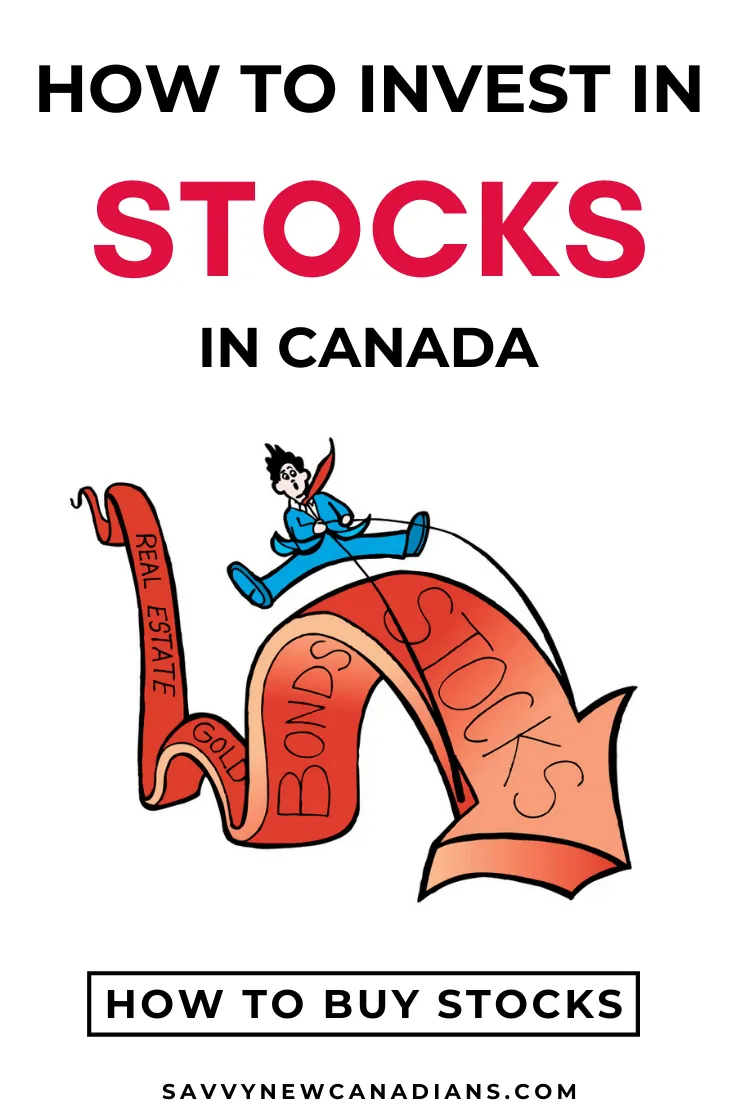
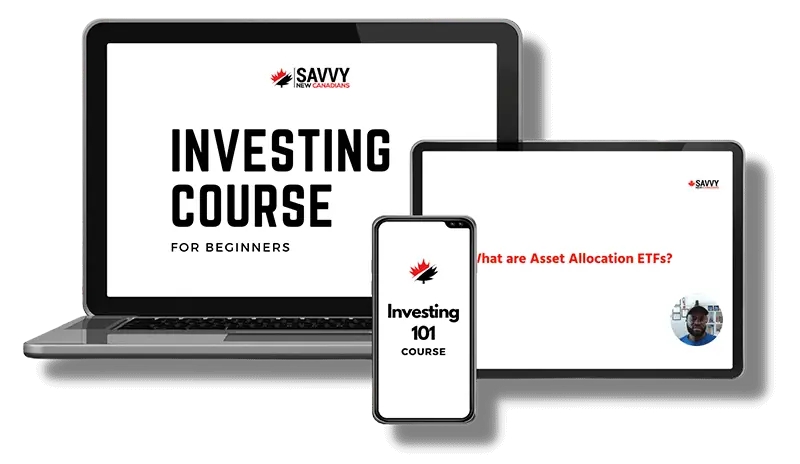

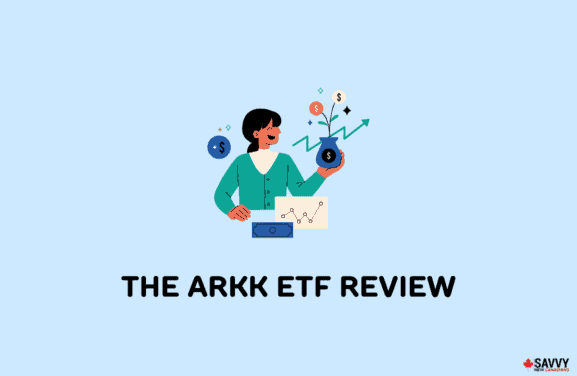
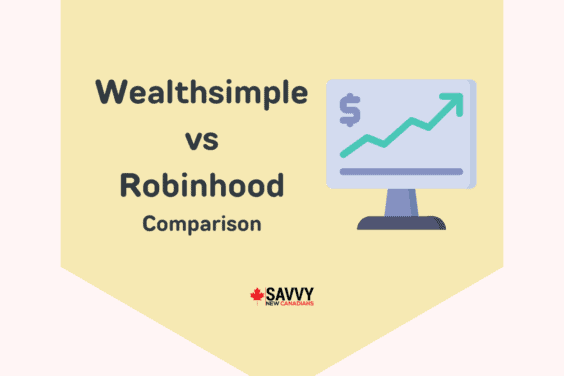

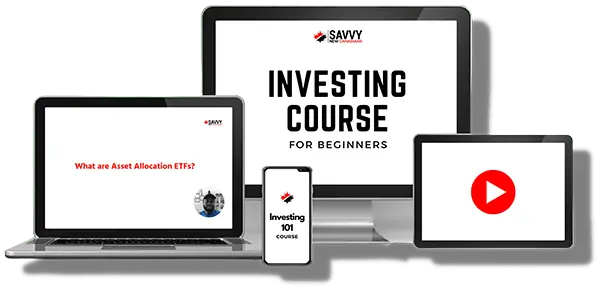

Hi. If I am living outside of Canada can i open an account with Wealthsimple Trade and to invest in stocks ?
@Holmes: No, I believe you need to be a resident of Canada, unless you are only outside of Canada temporarily.
Love reading all your blogposts on investing. So simple to understand and extremely informative. Kudos!!!
@Wemimo: Glad to hear you have found them useful! Cheers.
Thanks for the simple explanations re stocks and investing. What am i missing, what is the difference between putting a limit on selling and a stop order? Are they both not an order to sell once the stock hits a certain price?
CAN THE TFSA’S FUNDS BE UASED FOR TRADING STOCKS? WHAT PROCEDURE BE OPTED TO OVAID TAXES?
@Sabir: Yes, you can use your TFSA account to trade stocks. You may want to avoid day trading though as the CRA may consider you to be carrying out a business and tax the gains.
I’m very much happy on dis ur explanation, tnx so much.
Great explanation. Do you have any articles on Mutual Funds…pros and cons?
@Iverson: Here’s a primer on mutual funds: https://www.savvynewcanadians.com/understanding-mutual-funds/